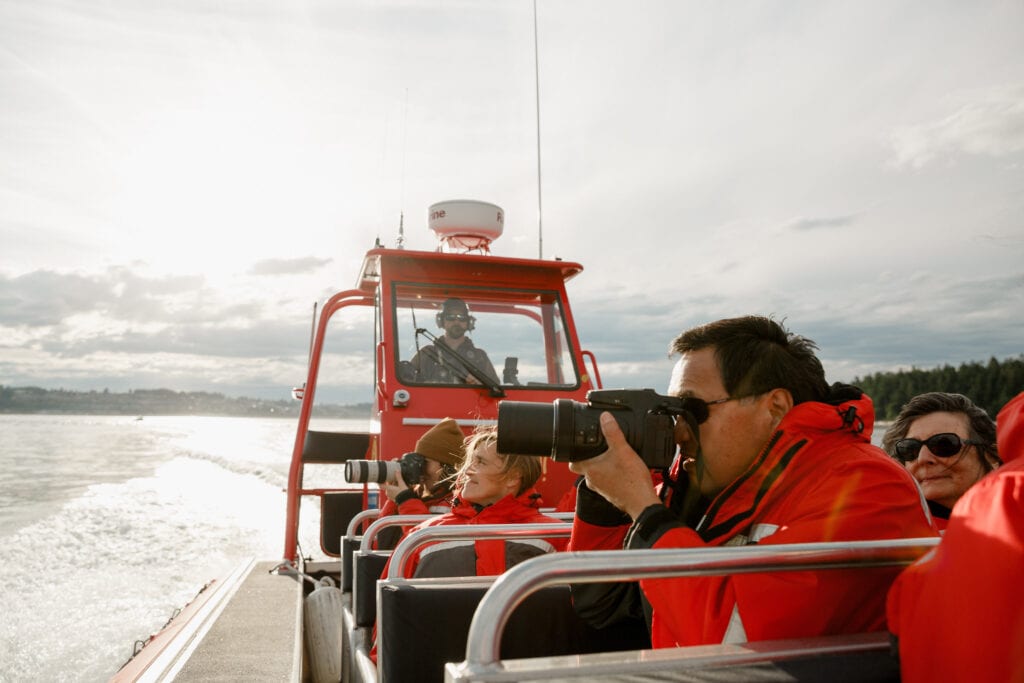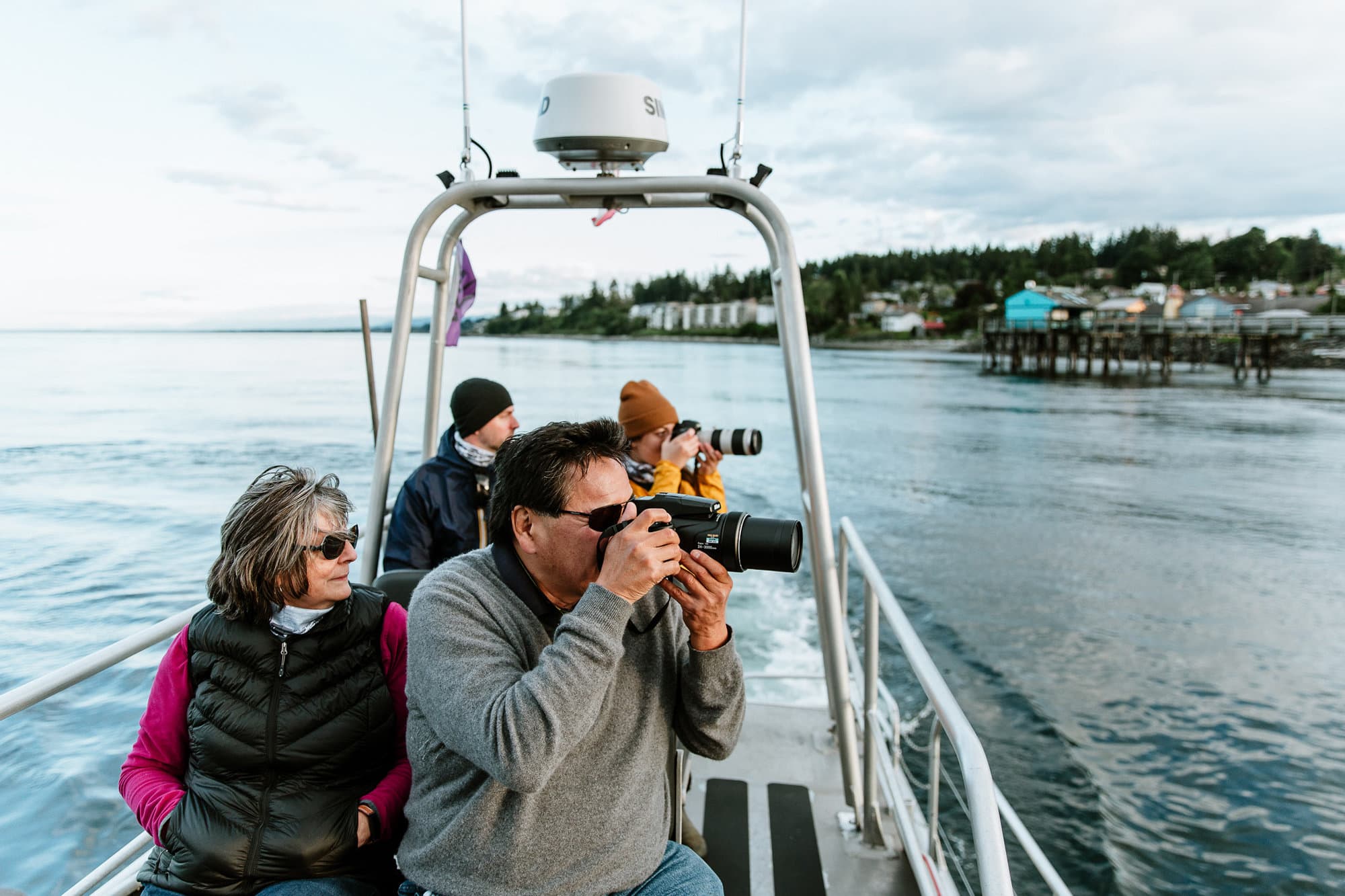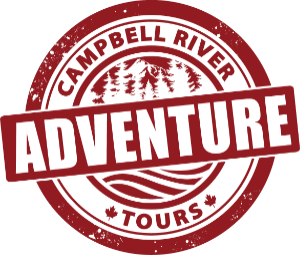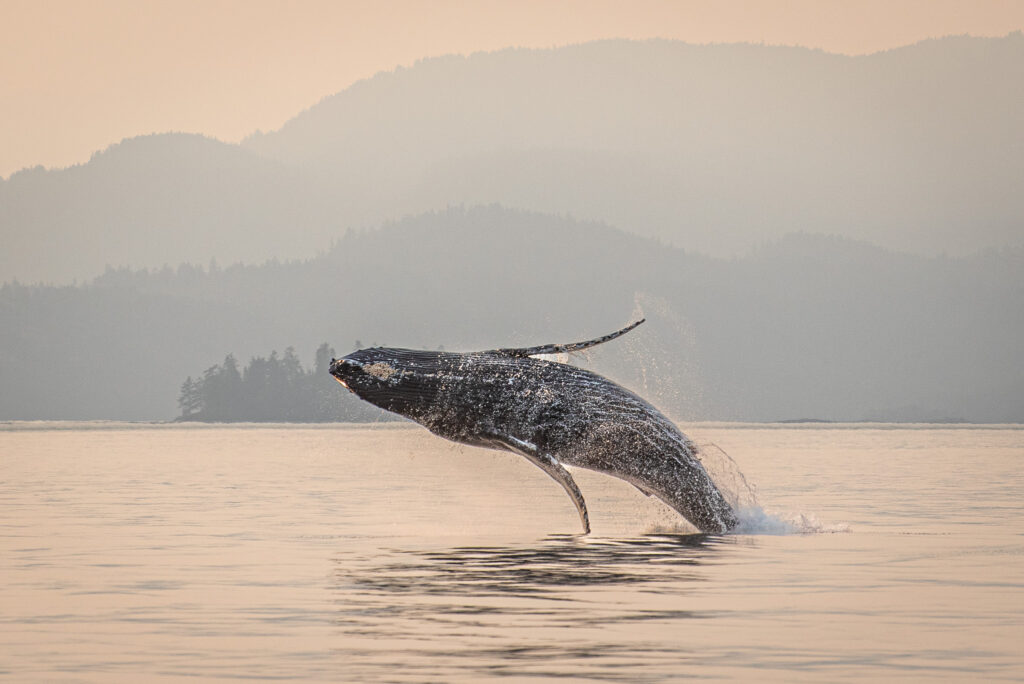Words by Maddie Lemke

Encountering whales in the wild is a special experience. Taking photographs on your tour is a great way to enhance lasting memories. However, capturing photos of whales is easier said than done. The boat is constantly moving, being rocked by the waves, and wildlife disappears and reappears unpredictably.
In this comprehensive guide, we will introduce you to everything you need to know to take amazing photos of whales and other wildlife.

Respect for Wildlife
When it comes to taking the perfect wildlife shot, it is important to remember that when we are watching whales, we do so with respect for the animals. We are visitors in their home and don’t want to disturb or scare them.
In Canada, there are strict regulations in place to ensure the wellbeing of marine mammals and we at Campbell River Whale Watching are making those a priority on all our tours. The regulations mean that we are trying our best to keep distances of at least 100-200 meters from marine mammals and don’t stay with them for extended periods. We hope that if you join us on a wildlife tour, you care about the wellbeing of the animals and will understand these practices for ethical wildlife viewing. Please do not ask your guide to get closer to the animals to take photos.
The Preferred Vessel
Taking great pictures of wildlife requires careful consideration of the vessel that will carry you through the marine landscapes. When choosing between covered boats and zodiacs, it’s essential to weigh the advantages each offers.
Covered boats provide ample space, allowing you to move around comfortably as you search for that perfect shot. They are also a great choice for rougher weather conditions, as they protect your gear well from the elements. However, their stability is compromised by the undulating waves, making it a bit more challenging to steady your camera.
Most of the professional wildlife photographers that have joined our tours prefer our zodiacs. They offer a stable platform, minimizing the impact of the waves and providing closer proximity to the water with 270-degree views. While the space on zodiacs may be more confined, getting lower to the waterline creates a nice soft foreground and magnifies the depth in your images.
Whether you opt for the spacious comfort of a covered boat or the stability and close-to-the-action experience of a zodiac, your choice will play a pivotal role in shaping the narrative of your wildlife photography adventure.
Camera Choice
We recommend looking at what camera options you have available to you and choosing the one with the highest zoom quality.
While a DSLR or mirrorless camera with a telephoto lens will be your best option for shooting great wildlife images, they can be very expensive. If you do not already have one of those cameras, a point-and-shoot with a decent optical zoom function will work well. A lot of our guests bring no more than their smartphone camera. Depending on the quality of your smartphone camera, the zoom options can be more limited though.
Another factor to consider is the shutter speed capability of your camera. Wildlife usually moves fast, so you want to make sure your camera can handle fast-paced movements. Turning off the flash helps to maintain a swift shutter speed. Another tip is to opt for memory cards with fast processing speed to mitigate shutter delays.

Protect Your Gear
The elements can be unpredictable on a whale watching tour. Equip yourself with waterproof gear or bring a camera bag. To have your camera fast accessible, wrapping it in a toque/beanie works as well. If you do not have a spare one, ask our office staff or your guide before setting off and they will be happy to lend you one!
Secure the camera strap around your neck or your wrist to prevent dropping it into the ocean – the boat can move a lot and unpredictably.

Prepare for Action
Acknowledge the constant movement of whales and adjust your camera settings for optimal performance. Consider a shutter speed of 1/1000 or faster, especially during wave motion. For some cameras, consider utilizing the sports mode to effortlessly capture the dynamic movements.
Choose a continuous shooting mode to capture a series of frames, ensuring you don’t miss a moment.
Zoom Considerations
Avoid using digital zoom on point-and-shoot cameras, as it can result in blurry shots. For advanced cameras, choose lenses within the 400-500 mm range to balance steadiness and compensate for boat movement. Stick to a zoom lens with versatile focal lengths to minimize the hassle of changing lenses during crucial moments.
Adjusting to Light Conditions
Whales may transition between well-lit open waters and areas with limited light. Be prepared to adjust your camera settings accordingly. Familiarize yourself with your camera controls before your tour to swiftly adapt to variable light conditions.
Preparedness
Carry spare batteries and memory cards to avoid disruptions during the trip. This ensures you don’t miss any extraordinary moments, and your equipment is ready for the entire duration of the whale watching adventure.

Think Like a Whale
Marine mammals usually surface and then disappear for a short period, before they resurface. Anticipate where the whale might reappear by observing the direction it is headed and how fast it is going. Instead of fixating on where the whale disappeared, predict its potential path for a better chance of capturing remarkable moments. Don’t forget to ask your expert guide for their estimate as well.
Enjoy the Moment
While photographing wildlife can be very rewarding, don’t forget to take moments to put your camera down and fully immerse yourself in the marine environment. Absorb the magic of the ocean, breathe in the fresh air, and listen to the whales. Create mental snapshots alongside your photographs to truly cherish the experience.

Conclusion
Mastering the art of whale photography demands a blend of technical proficiency, adaptability, and profound respect for these incredible creatures. Whether you’re a seasoned photographer or a novice, these detailed tips aim to enhance your whale watching adventure, ensuring you capture and cherish the essence of these magical moments.
Do you want to take your photography skills to the next level? We offer the ultimate 6-day photography workshop with award-winning wildlife photography instructor Liron Gertsman! Learn more.



